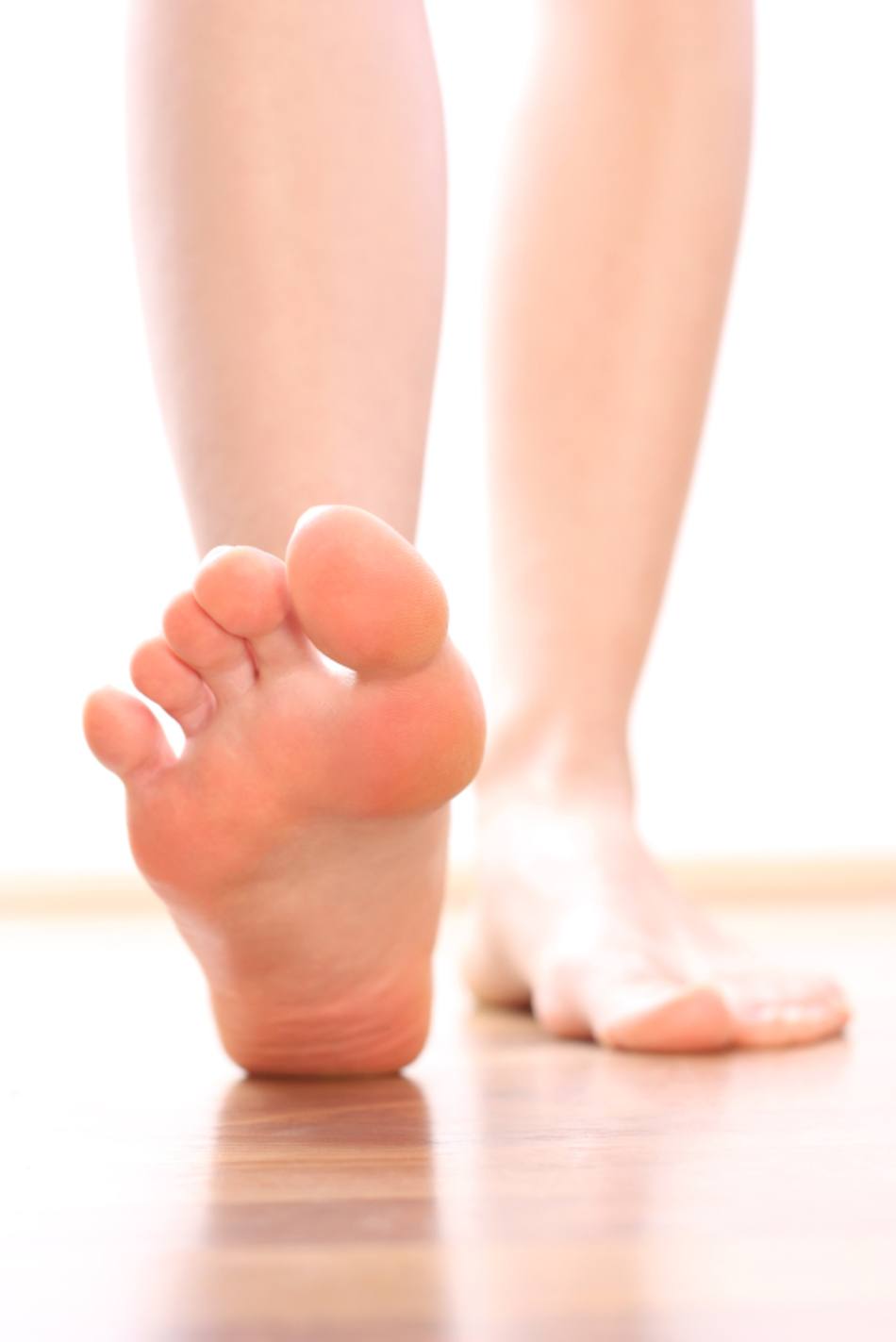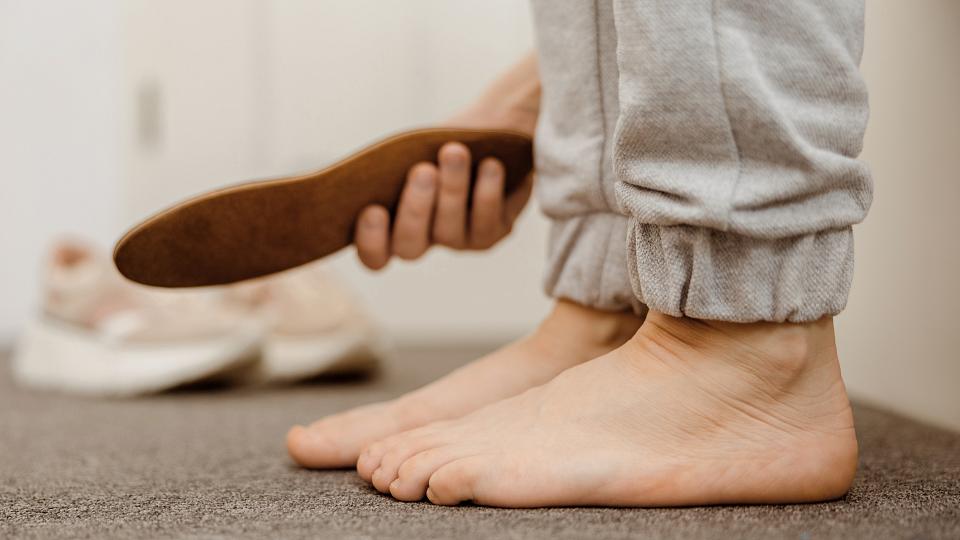
Dr. Miller: Painful feet, especially in the morning, could that be plantar fasciitis? We're going to talk about that next on Scope Radio.
Announcer: Access to our experts with in-depth information about the biggest health issues facing you today. The Specialists with Dr. Tom Miller is on The Scope.
Dr. Miller: I'm here with Alexej Barg. He's an orthopedic surgeon here at the University of Utah and we're going to talk about foot pain as it relates to plantar fasciitis. Alexej?
Dr. Barg: Yeah, the plantar fasciitis, I'm originally from Switzerland and in Switzerland we call it the folks disease. Almost everybody in the country did experience this type of disease at least once in his life. Dr. Miller: What is it?
Dr. Barg: Actually, many people do not really know what it is. And I really do believe that plantar fasciitis is not a diagnosis. It's like a headache. A headache is not a diagnosis, it is just a symptom. And I do strongly believe that plantar fasciitis is also just a symptom.
Dr. Miller: Then it has multiple causes?
Dr. Barg: Yeah. Dr. Miller: Is it just pain?
Dr. Barg: It is the pain, but then you should figure out what is causing this pain and this is the most important part to plan the treatment. And maybe let me tell you what are the typical causes for plantar fasciitis.
Dr. Miller: Could we, before we talk about the causes, let's talk about what the symptoms might be. So if someone comes to you, how will they present with their problem before you look for the causes?
Dr. Barg: So, first of all, everybody can come with a plantar fasciitis regarding age. There is no big difference between genders. It can be female patient. It can be male patient. Typically, the patient presents with heel pain localized across the heel but with some radiating pain along, for example, the arch of the foot. These are the typical symptoms of plantar fasciitis.
Dr. Miller: Is it more common in people with high arches or what we call flat feet?
Dr. Barg: Yeah, the patient's with the flat feet do usually present with those pains, but there are also some different, some other causes. For example, for plantar fasciitis another cause can be the tightness of the lower leg muscles, especially on the back of the lower leg.
Dr. Miller: The calf muscles?
Dr. Barg: The calf muscles, exactly. And the second kind of common reason for plantar fasciitis can be the problem with the Achilles tendon. That means the Achilles pain can actually radiate to the plantar fascia so the people do think that the plantar fasciitis . . .
Dr. Miller: So it's a referred pain almost?
Dr. Barg: Exactly. Dr. Miller: So the typical person with what we would call the typical symptoms of plantar fasciitis, they experience that when they are putting weight on their feet? When they first get up in the morning and walk across the room or do they have that pain even at rest when they're not weight-bearing?
Dr. Barg: So usually the patient presents with two types of pain during the day. First of all, early in the morning so they have some problems getting into their shoes. For example, to get out of the house to walk to the car and during the day they're getting better. However, if they are all day on their feet at the end of the day they usually experience the same pain after they are weight-bearing on their feet.
Dr. Miller: So it sounds like there are different causes. There must be different treatments.
Dr. Barg: Yes, there are. So, first of all if the patient has a flat foot deformity then you should try to correct the flat foot deformity. In most cases, there is no need for surgery. For example, you can prescribe custom-made shoe insoles with some medial arch support. Most commonly, I also recommend the physical therapy. The physical therapy helps to reduce the local pain. And when we speak, for example, with the patient with the tight calf muscles there are some very specific exercises you can prescribe to the patients to elongate or to strengthen the calf muscles which may help to get the pain relief.
Dr. Miller: Now, I've seen some of my patients with plantar fasciitis who've seen physicians or podiatrists who treat that using a ball they roll up and down their feet. I don't quite know what that's for.
Dr. Barg: It helps actually. It helps even better if you put this ball in the freezer or in the fridge because then it's cool. What is even more important is to try and strengthen the plantar fasciitis. And the doctors can show them in the clinic how to do that or the patient can go to the physical therapist and the physical therapist can teach the people how to do that. Very important those stretching exercises should be done at least 10 times a day.
Dr. Miller: So for the calf or the bottom of the foot?
Dr. Barg: It's for the bottom of the foot. It's hard to describe how to do that. So what you usually do is bend your knee and you put your foot on the contralateral. That means the other ankle and pull on your toes so you try to flex the foot. You try to bring the plantar fascia in tension. And then you go with your thumb over this fascia, which is actually quite painful. So therefore I do recommend to do it just one minute or two minutes, but it's better to do it 10 times a day. Dr. Miller: So it's self-massage?
Dr. Barg: Exactly.
Dr. Miller: So it's basically massage of the sole of the foot while the foot is flexed. And how effective are the treatments if done correctly?
Dr. Barg: It's very, very effective. I would say in 90 to 95% of all those patients with these very simple measures can get pain relief. And usually I'd like to see the patient maybe six or eight weeks after the initial treatment. Fortunately, the patient normally doesn't show up in my clinic then because that means they ignore the follow-up appointment because they are absolutely pain-free.
However, the patient that has remaining pain, if they are coming back, then I do recommend shockwave therapy, which is extremely effective in treating plantar fasciitis. However, I do not like to start with this therapy despite the fact that it's an effective therapy because this therapy is very painful. So you're using kind of ultrasound machine and it hammers on the insertion of the plantar fascia, which is painful, which induces inflammation and the inflammation induces in itself the self-repairing process for the plantar fasciitis.
Dr. Miller: So if it doesn't hurt it's not going to do you any good?
Dr. Barg: Exactly. Exactly.
Dr. Miller: Now, one final question. I've heard some people mention that they've had a bone spur and someone told them that was the cause of their plantar fasciitis. Could you comment on that?
Dr. Barg: In the meantime, we know exactly that the bone spur is not the cause of plantar fasciitis. Many patients coming to me say, "My family doctor told me to remove the bone spur." I would definitely not recommend to do it because if you do just remove the bone spur, first of all, you will not eliminate the pain, but you may weaken the plantar fascia and even rupture the plantar fascia while you do remove the spur, which can be a big problem for the patient.
Dr. Miller: So, basically, lots of people have bone spurs. That doesn't mean it's the cause of the problem.
Dr. Barg: Yeah. So when we take just 100 normal people off the street without any pain and do any radiographs of the feet, I'm pretty sure we would detect maybe 10 or even 20 people of these 100 asymptomatic people, meaning people without pain, and we will see in up to 20% some spurs of the heel bone.
Announcer: thescoperadio.com is University of Utah Health Sciences Radio. If you like what you heard, be sure to get our latest content by following us on Facebook. Just click on the Facebook icon at thescoperadio.com


